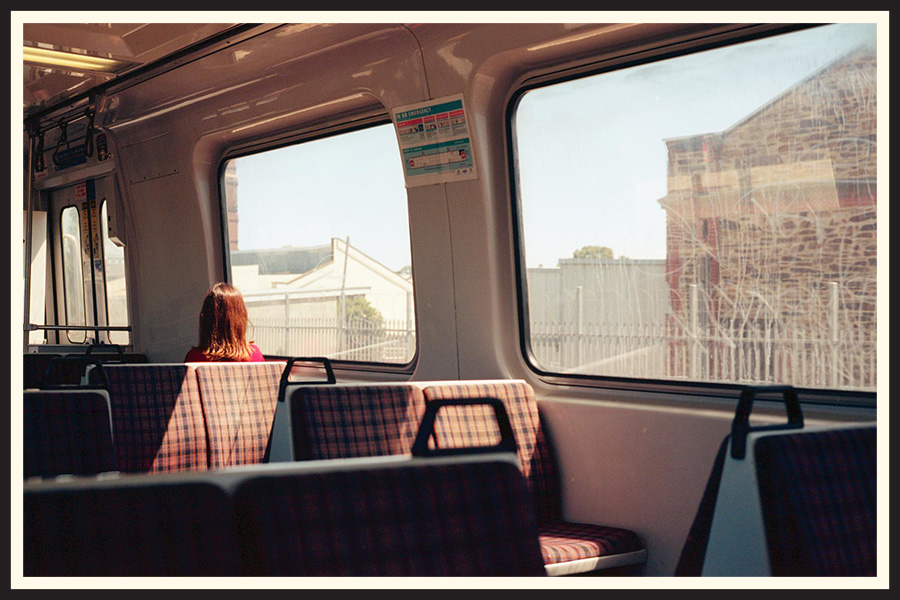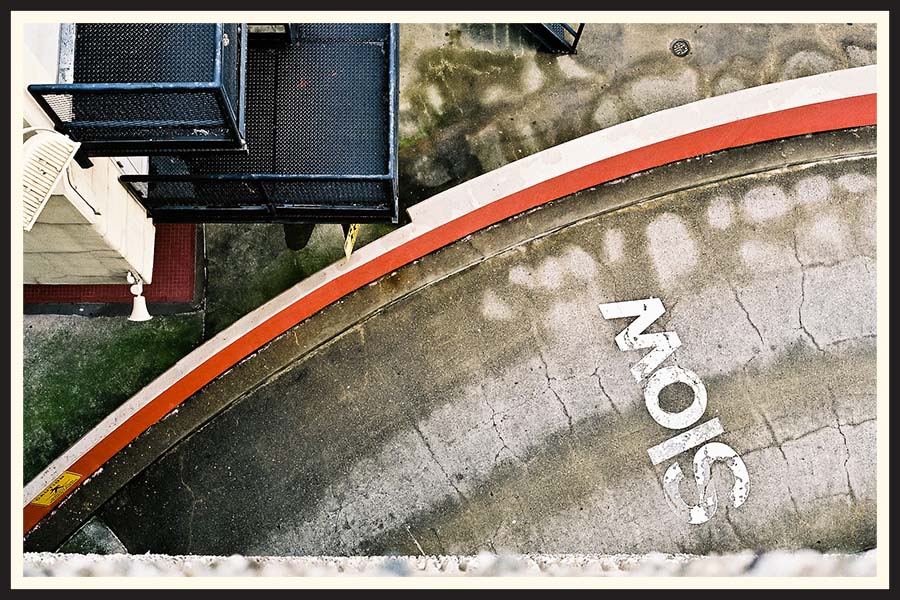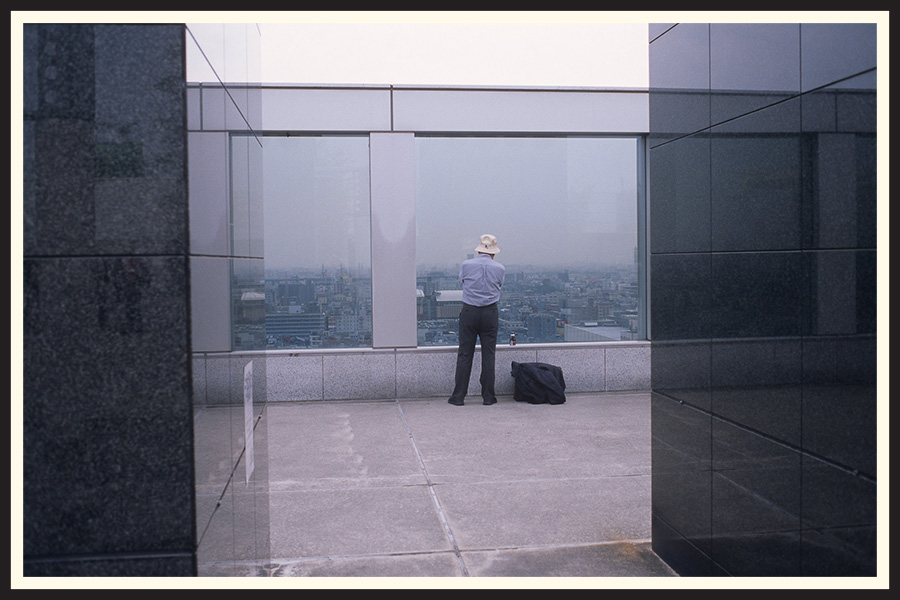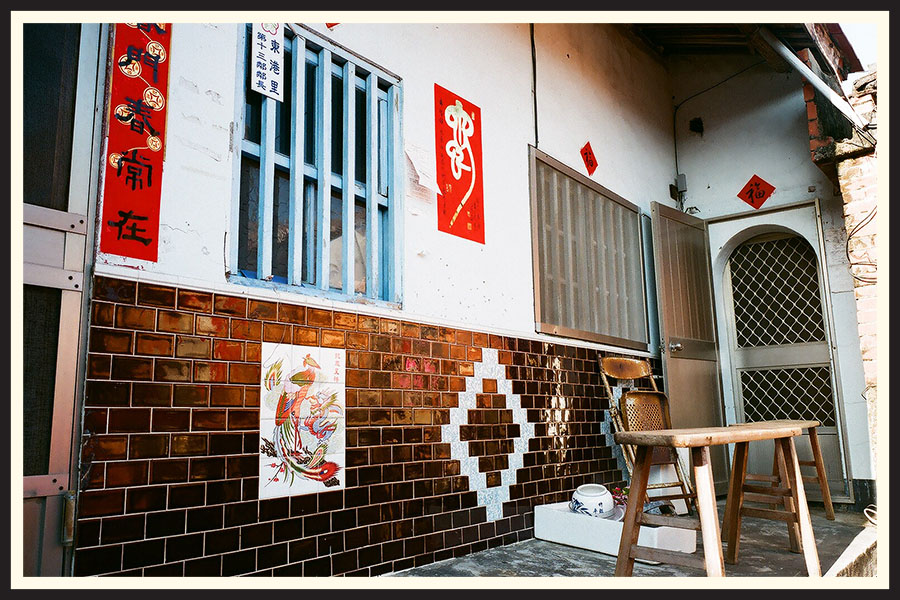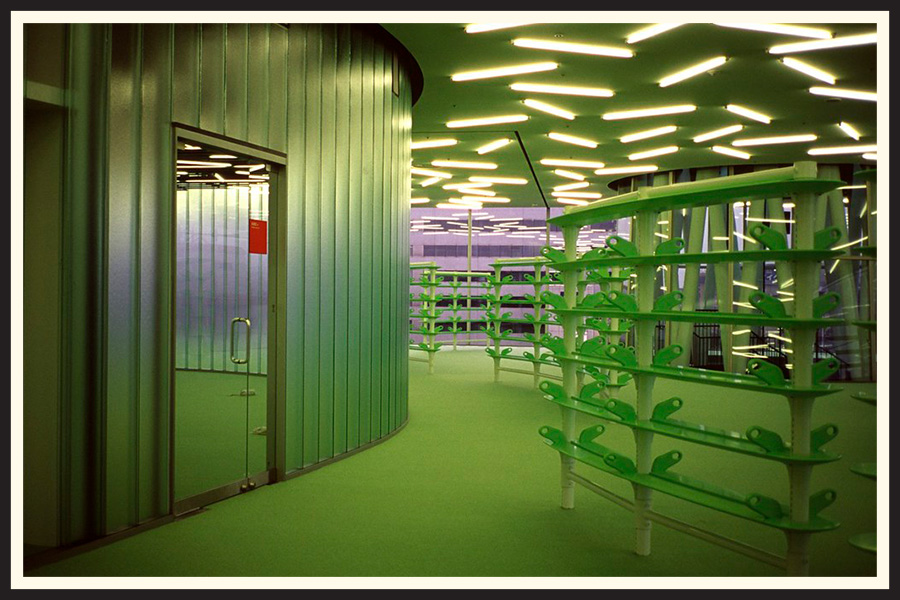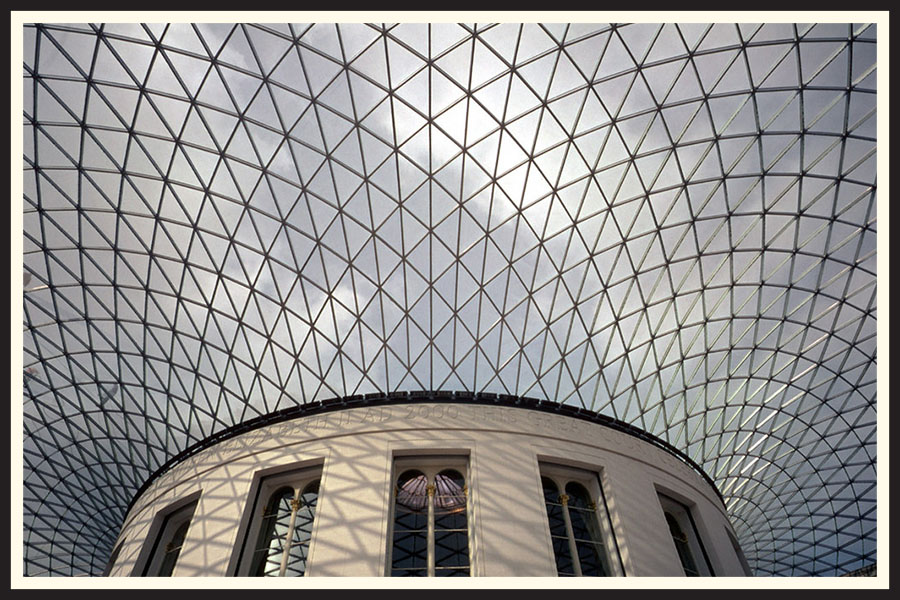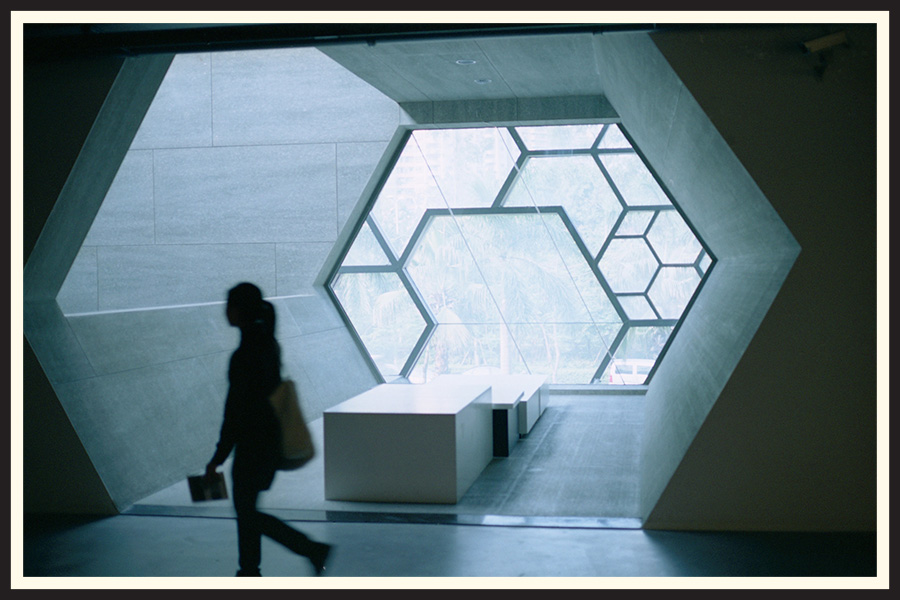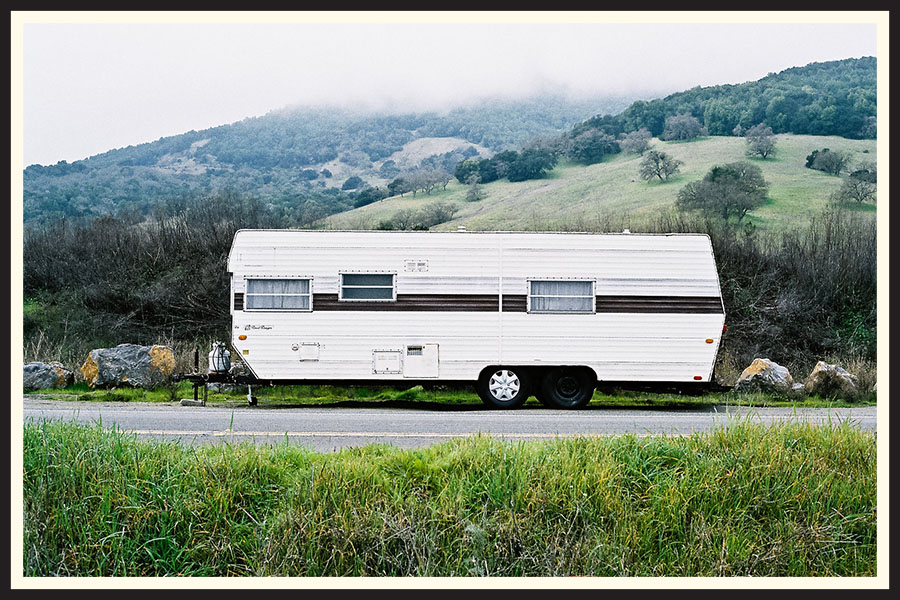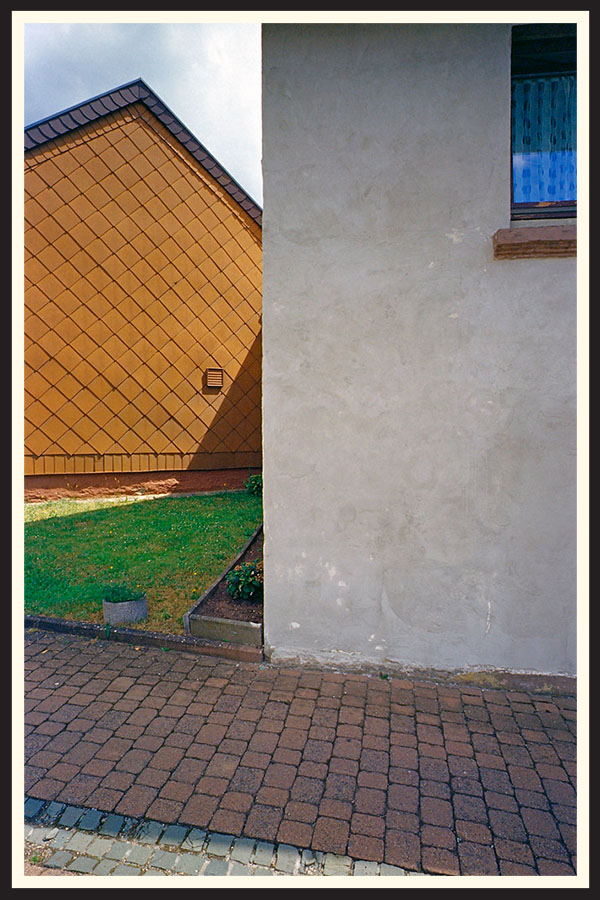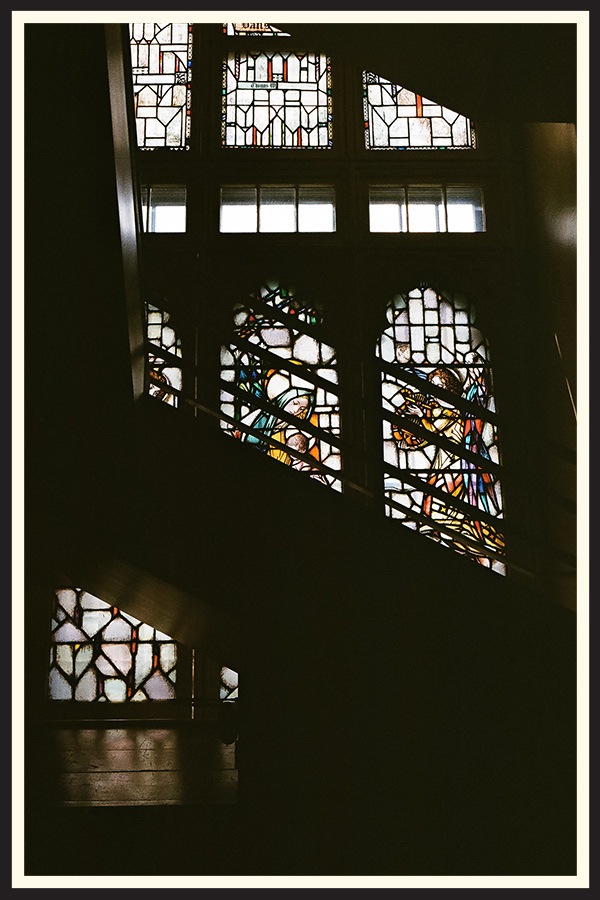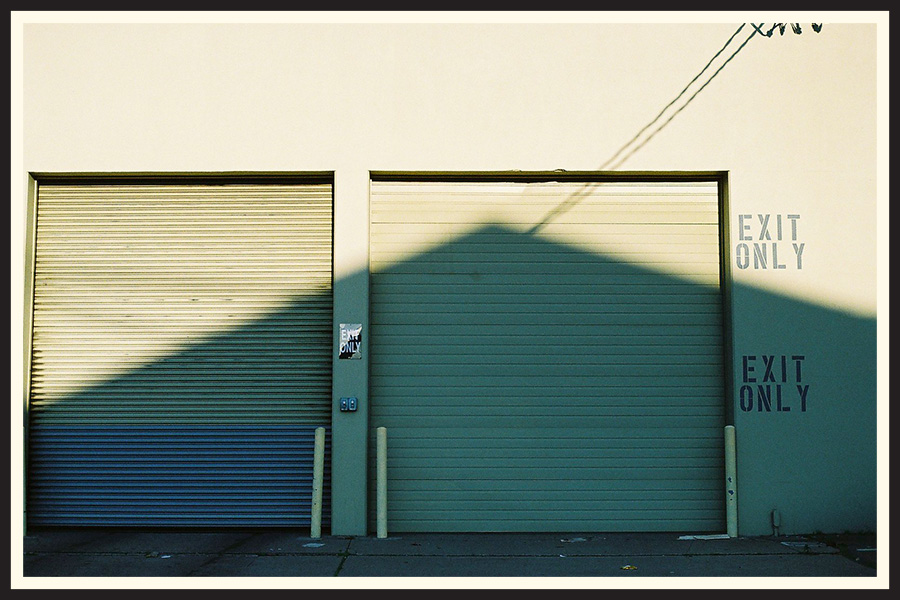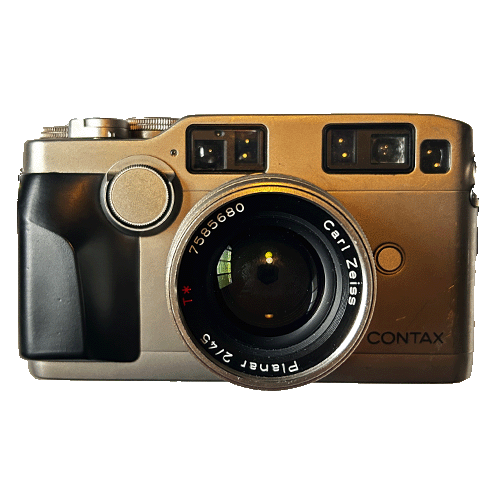
Contax G2 Review – Pros and Cons, Tips and Tricks, Sample Photos

Last Updated

Powered by Creative Commons.
Photo attribution available here.
This site contains affiliate links. We may receive a commission for purchases made through these links.
There are few 35mm film cameras as prolific and unique as the Contax G2. It’s also extremely divisive among photographers – some people love the camera while others hate it.
The G2 system has been in our collection for many years – while it’s captured some incredible images, it’s also caused its fair share of headaches. We’re happy to share what we love, what we hate, and some of the most helpful tips we’ve picked up along the way.
If you’re reading this article, there’s a good chance you’re wondering: is the Contax G2 worth it in 2023? Truth be told, the answer will depend on the person and what they’re looking for in a camera.
Check out our in-depth, hands-on, Contax G2 review to find out if it’s the right choice for you. 👇
Table of Contents
Contax G2 Background / History
The name Kyocera might not mean much to the average film photographer, but the Contax G2 (and many other film cameras) wouldn’t exist without this massive, Japanese corporation.
Kyocera started in 1959, manufacturing industrial ceramic parts for things like televisions. As the company grew, they expanded to other sectors and acquired a variety of businesses.
In 1983, Kyocera officially entered the film camera game with the acquisition of the Yashica Company, including their licensing agreement with Carl Zeiss (an iconic company responsible for some of the greatest camera lenses ever produced).
They would go on to manufacture cameras (both film and digital) for over two decades, releasing models under the Yashica, Contax, and Kyocera brand names.
The Contax G-series first debuted in 1994 with the release of the G1, followed by the Contax G2 in 1996. These premium, electronic rangefinders were popular at the time of release and the allure has maintained, decades later.
Kyocera officially shuttered the camera wing of their business in 2005, discontinuing the Contax G2 after nine years in production.
While their time in the business may have been short, Kyocera made a big impact with innovative camera designs like the Contax G2.
Contax G2 Specifications
Year: 1996
Format: 35mm
Film Speeds: 6 – 6400
Size: 139 x 80 x 45mm
Weight: 560g
Battery: 2 x CR2
Lens: Contax G Mount
Shutter Speeds: 16s – 1/6000 + B
For an extremely detailed breakdown of the G2’s specifications, we’d recommend taking a look at the Original User Manual.
Here, we’ll cover the most important and noteworthy features of the Contax G2. For a quicker summary, jump ahead to the Contax G2 Pros & Cons.

Contax G2 Lenses
A lot of the G2’s success comes from the legendary quality of the Carl Zeiss T* lenses produced specifically for the G-series.
Designing an entirely new line of lenses was a unique choice – many rangefinders of this era used the popular Leica M-mount. But the complex, electronic design of the G-series left Kyocera and Zeiss no choice but to start from scratch.
Carl Zeiss produced seven G-mount lenses in total, although the three original models remain the most popular and easiest to find. These were released in 1994 alongside the G1.
The original trio of G-series lenses includes the 45mm f/2, 90mm f/2.8, and 28mm f/2.8.
All three of these lenses are compatible with both the G1 and the G2 – they were also released in black as well as the standard, champagne finish.
Shortly after the release of the G1 and the original three lenses, a super wide-angle, 16mm f/8 became available. With such an extreme angle of view, the 16mm lens requires an additional viewfinder, which mounts on the camera’s hot shoe.
When Kyocera announced the updated Contax G2, it was accompanied by the release of two additional lenses – the 21mm f/2.8 and 35mm f/2. The 21mm requires the same additional viewfinder as the 16mm.
The Contax G2 lenses aren’t compatible with early versions of the G1. A modification was made to later versions of the G1 to allow the use of these additional lenses.
You can easily tell if a G1 has the modification by looking for a green sticker inside the film door – these are also referred to as “green label” versions.
The final G-series lens is definitely the strangest of the bunch. Released in 2000, the 35-70mm f/3.5-5.6 is the first ever zoom lens made for a rangefinder. This is the only one of the Contax G2 lenses that is not compatible with any version of the G1.
Focusing with the Contax G2
Arguably the most unique aspect of the Contax G-series is the focus system. It’s already uncommon for a 35mm rangefinder to offer autofocus, but the G-series takes it a step further with an electronically controlled, futuristic system.
Unlike most 35mm camera lenses, the G-series options have no physical focus rings. Instead, manual focus is set on the camera itself.
And manually focusing on the camera body can be just as awkward as it sounds. On the Contax G2, you rotate a small wheel on the front of the camera to change the manual focus. (See image below)

This is a change from the G1, where the focus wheel is located on top of the camera.
The focal distance is displayed (in meters) on the top LCD screen and inside the viewfinder, which also has an indicator to confirm that you’ve achieved focus.
But the image you see through the finder doesn’t give a live update of the focus. It’s more similar to a point and shoot camera where everything in the viewfinder is always in focus.
This is probably the feature that causes the most division among photographers who love the Contax G2 or hate it.
Fans of a traditional rangefinder focus system like you’d find on a Leica M-series camera will probably hate the G2. But photographers who prefer point and shoots and a more automated shooting experience will feel right at home.
The Contax G2 uses near-infrared beams to calculate focus alongside a passive autofocus for long distances. The beams come from the front of the camera, just above the manual focus dial. There are two autofocus modes: single and continuous.
The autofocus system is the most significant difference when comparing the Contax G1vs G2. After using both cameras, the upgraded autofocus on the G2 is definitely noticeable.
When using the G2, the autofocus is quick, responsive, and precise. Each of these attributes is slightly less true with the G1, though it’s by no means unusable.
And even though the G2’s autofocus works well, it can be a lot more sensitive and finicky than modern cameras.
Certain shooting situations can really confuse the G2, such as repeating patterns, low contrast subjects, bright/reflective surfaces, and horizontal lines. It’s also almost impossible to use the autofocus in the dark, unless you’re extremely close to your subject.
If you’re coming from a modern digital camera, it may take some getting used to the single focal point on the G2. There’s a small focus frame in the center of the viewfinder – you place your subject in the frame, lock the focus, then recompose your image.
Bottom Line: With the Contax G2 camera, it’s preferable to use autofocus, which works very well. The manual focus is extremely nontraditional.

Contax G2 Viewfinder
Once again, the G2 breaks the mold of traditional rangefinder film cameras when it comes to the viewfinder.
If you’ve never used a rangefinder, the viewfinder usually shows you a wider area than what will actually be captured in your image. There are also “frame lines” in the viewfinder, showing you how much will be captured when using lenses with corresponding focal lengths.
But on the Contax G2, the viewfinder uses an internal, optical zoom that automatically adjusts the viewfinder when you change lenses, so that you always see the entire frame. It’s a cool feature, but once again, this is a much different shooting experience than a traditional rangefinder.
The eyepiece on the G2 sticks out half an inch off the back of the camera, helping keep your nose off the body while looking through the viewfinder. There’s also a diopter adjustment, which is essentially a way to change the focus of the viewfinder itself, to ensure a clear, focused view of your shot.
There is a small display in the bottom of the viewfinder that shows the shutter speed, an exposure indicator, and a focus scale that confirms when you’ve locked focus. This display is illuminated, unlike the ISO display or the exposure counter on top of the counter. These can be difficult to see in the dark.
The viewfinder is relatively small, more on par with high-end point and shoots than other rangefinders or SLRs. While it’s certainly not the worst viewfinder we’ve ever used, it can be a bit annoying at times.
The combination of the size, the optical zoom, and the distance off the back of the camera make it so you really need to be looking straight through the viewfinder at the perfect angle, or the view can get obstructed.
We find that compared to other film cameras, we have to adjust our view pretty frequently when using the Contax G2. Wearing glasses doesn’t help.

Contax G2 Shutter Speeds
Another noteworthy feature on the Contax G2 is the extremely fast max shutter speed of 1/6000. This speed is only available in automatic exposure mode – if you’re setting the shutter speed manually, the maximum is 1/4000.
This is one of the fastest shutter speeds available on any film camera. You can find professional, 35mm SLRs from the early 2000’s that max out at 1/8000, but even that speed is generally the fastest that modern digital cameras offer.
The G2 also has a maximum flash sync speed of 1/200 – this is the maximum shutter speed you can use with a flash. While 1/200 or 1/250 is a common max flash sync, a lot of older film cameras were limited to 1/60.

Contax G2 Flash
Contax released two flashes to accompany the G-series: the TLA-140 and TLA-200. While these two models were designed to match the G-series, any of the Contax TLA flashes should work on the G2.
Both the TLA-140 and TLA-200 are designed to make flash photography as simple as possible. In TTL (through-the-lens) mode, these flashes will use the exposure reading from the camera and automatically adjust the power of the flash to ensure a perfect exposure.
Of the two Contax G2 flash options, the TLA-200 is the more popular choice and the version that we’ve had experience with. The 200 model is short and squatty while the 140 model is tall and skinny.
The TLA-200 is probably our favorite flash – not just for the G2, but for any camera. The compact size perfectly fits the camera and doesn’t add much weight or bulk.
And most importantly, flash photos look fantastic without any real effort. Just turn it on, select your focal length, and you’re ready to shoot.
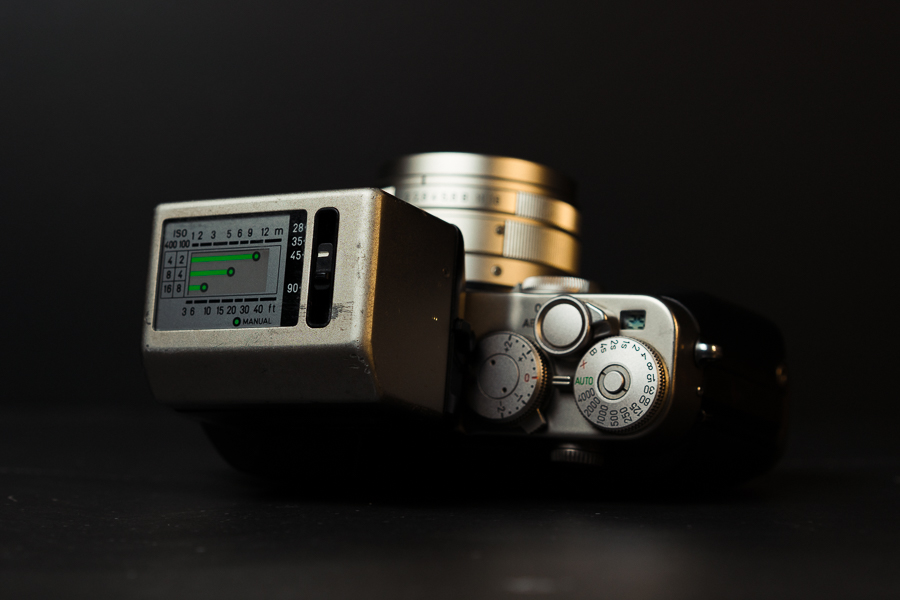
Contax G2 Battery
The battery for Contax G2 is two 3V CR2s. These two lithium batteries power all of the camera’s functions and it will not operate in any way without batteries.
There is a low battery warning indicator that shows up on the LCD screen on the top of the camera. The manual suggests replacing the batteries ASAP when this warning shows up, although the camera will operate for a little while before losing power completely.
According to Kyocera’s testing, one pair of 3V CR2 batteries has enough power for about 80 rolls of 24-exposure film.
If you opt to use one of the Contax TLA flashes, they also require two 3V CR2 batteries.
Tips / Troubleshooting for the Contax G2
You can greatly improve your experience with the Contax G2 and help troubleshoot common issues with just a few easy tips. We’ve found these out through trial and error and from discussing the camera with other owners.
Here’s what you can do to get the best results from the G2 and hopefully avoid losing your mind in the process.
Make Sure to Remove the Lens Cap
Yes…we’re serious. It may seem incredibly obvious, but there’s one key detail about the G2 that tricks a lot of new owners.
The viewfinders on rangefinder film cameras are completely separate from the lens – you’re essentially looking straight through the camera.
So when you pick up the G2 and hold it up to your eye with the lens cap on, your view through the finder will look the exact same as when the cap is removed.
Some people end up with the occasional black photo, accidentally taken with the lens cap on. We don’t really have that problem because the exposure indicators should tell you that the scene is too dark.
That said, there have been countless times that we were worried that the G2 was broken because we couldn’t get a good exposure in bright daylight.
Bottom Line: Get in the habit of making sure your lens cap is removed when shooting the G2.
Don’t Block the Autofocus Beam
While the Contax G2 is incredibly ergonomic, the compact size makes it easy to block the near-infrared beam that the camera uses to autofocus. This is located on the front of the camera, just above the manual focus wheel. (See image below)

We don’t usually encounter this issue when shooting photos in landscape orientation, holding the camera horizontally. Since the pointer finger is on the shutter button, the autofocus beam is nice and clear.
But when changing the camera to shoot photos in portrait orientation, holding the camera vertically, is when we frequently run into this problem. Out of instinct from using other cameras, we usually support the lens with our left hand, and this tends to block the focus beam.
Bottom Line: If you’re having frequent trouble locking focus with the G2, make sure that your fingers aren’t blocking the autofocus beam.
Watch Out for Loose Dials
There are a few dials on the Contax G2 that don’t have as much resistance as the others, meaning that they turn easily…sometimes too easily.
First is the “drive mode” dial on the top left of the camera – the wheel doesn’t have any way to “lock in” like the shutter speed dial does. If the Contax G2 travels in a bag, we find that almost every time, the shooting mode dial will have moved in transit.

This can cause serious confusion if you accidentally put the camera in self-timer mode and can’t figure out why you can’t take a photo. Just as often, the dial lands between two settings, which prevents the shutter from firing.
The other culprit on the G2 is the power button – a small lever located on the top left of the camera. Not only do you run the risk of accidentally taking photos of the inside of your bag, but the G2 also pulls from the battery as long as the power is on.
If you find that you’re getting really poor battery life from the G2, there’s a good chance that a lot of your juice is being wasted powering the camera when it doesn’t need to be.
We’d definitely recommend some type of camera bag or insert that allows the G2 to fit relatively snug. Even with a good storage solution, you’ll probably run into the problem occasionally.
Bottom Line: The “drive mode” dial and power switch can both be moved easily. Get in the habit of checking both and find a camera bag that fits the G2 well.
Master the Focus Lock Button
You can lock focus on the Contax G2 in two ways: pressing the shutter button halfway down, like you would on other autofocus cameras, or by using the focus lock button on the back of the camera.

The shutter button is very responsive and it feels easy to accidentally press it fully when you’re just trying to lock focus.
It may take some time to get used to, but it’s pretty unanimously agreed that the focus lock button on the G2 is the superior choice.
Some people may struggle with the “focus and recompose” technique if they’ve never used a camera in this way. But to get the most out of the G2, you’ll need to get comfortable with this style of focusing. After a while, it’ll become second nature.
Bottom Line: The focus lock button on the back of the camera is the optimal way to focus. Get comfortable using it with the focus and recompose technique.
Listen to the Lens
It can be hard to feel confident that you’ve locked focus on the G2, since the focus in the viewfinder doesn’t change. But after a while, you’ll be able to tell if you’ve locked focus just by the sound of the camera.
It’s a very distinct sound that the G2 makes while it’s hunting for focus. When it locks on, the sound is higher pitched than when it fails to find focus.
Even if the focus indicator weren’t working for some reason, we’d feel pretty confident in the ability to achieve proper focus just from listening.
Bottom Line: On top of checking the focus indicator, you can confirm you’ve achieved focus on the G2 by listening to the sound of the lens.
Use the AE Lock for Precise Metering
When you flip the lever on top of the camera to turn the power on, you can also put the camera in auto exposure lock (marked as “AEL”).
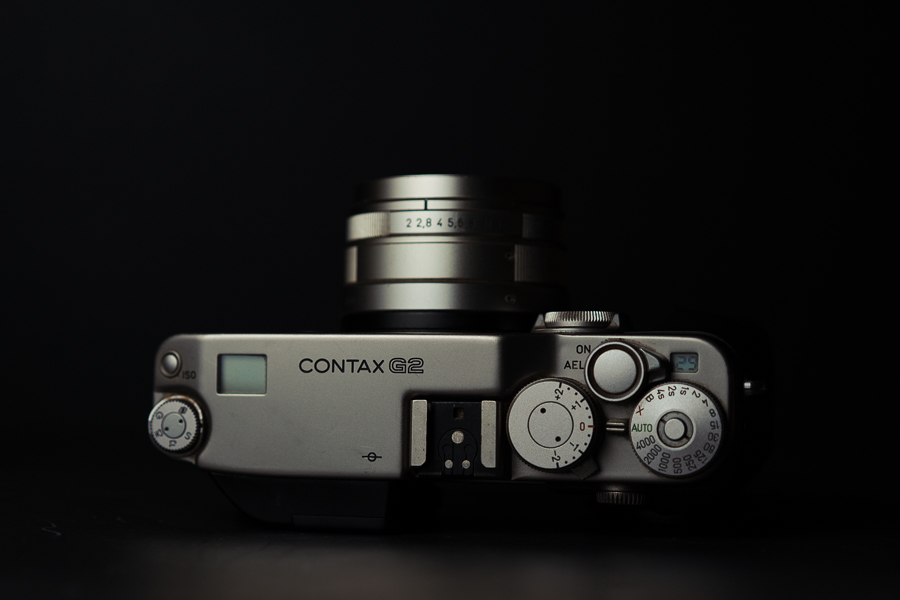
Just as the name implies, this allows you to lock the exposure while using the Contax G2 in aperture-priority mode. Normally, the light meter will continue calculating the exposure as you move the camera and the lighting changes.
This is particularly useful if you’re shooting backlit subjects, other situations that might confuse the camera’s meter, or you want to ensure the settings are the same between a few shots. We sometimes use this feature in the same way we’d use a separate, dedicated light meter.
Once you’ve decided which part of the scene you’d like to meter for, you can point the camera in that direction. We usually get closer than the actual shot we have in mind, to ensure that the viewfinder can only see the portion of the scene we’re trying to meter for.
Then, you slide the lever into the “AEL” position and the camera will memorize whatever settings it has calculated at that moment.
One thing to note is that the exposure is calculated using whichever f-stop you have selected, so if you use the AEL, then change the aperture, the exposure will be incorrect. Make sure to select the appropriate aperture ahead of time.
As mentioned above, the main, power lever can be switched somewhat easily. If you’re ever stumped, wondering why the G2 isn’t changing settings as it should be, make sure you haven’t accidentally locked the exposure.
Bottom Line: The AEL is a useful feature that can help you achieve more precise metering for better exposures.
Contax G2 Pros
Let’s summarize all of the things we love about the Contax G2 camera:
- Incredibly sharp, contrasty images. When the G2 hits, it really hits. The Carl Zeiss lenses produced for the G-series are some of the best lenses ever made.
- Compact, lightweight setup. The G2 with any of the prime lenses is a perfect size and weight. Sturdy, but light enough to carry around all day.
- Ergonomic design. Thoughtful touches throughout the G2 make the camera fit perfectly in your hands.
- Camera is responsive and snappy. It doesn’t lag or feel slow and clunky like some other vintage, electronically controlled film cameras.
- Flash photography is easy and looks great. It couldn’t be easier to use the TLA-200 and it’s just as compact as the rest of the camera.
- Fast maximum shutter speed and flash sync. You’ll have a lot of flexibility with shutter speeds more commonly found on high end digital cameras.
- Premium look and feel. The styling, build quality, and materials are all top notch. The G2 receives many compliments from non-photographers who recognize the aesthetic appeal of the camera.
Contax G2 Cons
While we’re huge fans of the Contax G2, there’s no denying that it has some flaws. For as much admiration as there is around this camera, it also has its fair share of haters.
These are the things that we dislike about the camera and may be some of the reasons that other photographers pass on the Contax G2.
- Viewfinder is small and can be difficult to use. We have to readjust our view with the Contax G2 more than with other cameras. Glasses don’t help.
- Nontraditional manual focus. Even though we’re personally content using autofocus when possible, there are times that a traditional manual focus would be helpful. Big con if you’re seeking out the true rangefinder experience.
- Difficult and expensive to repair. Kyocera stopped servicing G-series cameras when they shuttered their camera business. We know of one place in the US to repair (Nippon Photoclinic, NYC), but it ain’t cheap.
- Autofocus is unique and can be difficult. The focus-recompose technique can feel tedious compared to modern autofocus. The focus area is small and you have to be precise.
- Certain subjects confuse the autofocus. Even when you’re confident locking focus with the G2, the autofocus struggles with some specific subjects – lack of contrast, repeating patterns, bright/reflective surfaces, and horizontal lines. This is where a traditional manual focus would come in handy.
- Hard to use in the dark. Trying to shoot the G2 in the dark is always a hail-mary. The autofocus is basically useless in the dark unless your subject is very close to you.
- LCD screens are not illuminated. The two displays on top of the camera (ISO/focal length and frame counter) can be difficult to see, especially in darker situations. The ISO screen is notorious for getting LCD bleed, too.
- Delicate and finicky. Many film cameras, especially mechanical options, are beloved because of their rugged durability and simplicity. This is not the G2 – it’s a very complex camera that is somewhat delicate and sensitive.
Final Verdict – Should You Buy a Contax G2 in 2023?
The Contax G2 is an incredible camera, but there’s no denying that it has a lot of quirks that can really spoil the shooting experience.
When the G2 is working perfectly, it produces fantastic images and handles like a dream. The trouble is that oftentimes, the camera is far from perfect. It can feel delicate and sensitive, as if it possesses a stubborn mind of its own.
It’s not uncommon for a simple shot on the Contax G2 to take much longer than it should. The autofocus can be touchy and requires precision. The viewfinder can be awkward to use and often needs readjustment.
With a handful of frequent, minor annoyances like these, there’s times where it feels like an uphill battle just to take a photo on the G2.
Luckily, the majority of the time it’s an absolute joy to shoot – it’s usually quick, sharp, and operates smoothly. The size, weight, and ergonomics all feel as good as we could possibly imagine for a compact 35mm rangefinder.
There’s no denying that it’s a love/hate relationship – we just love the images and the feel of the G2 enough to deal with all of the things we hate about it.
It’s even harder to answer if the Contax G2 is worth it when you consider the current prices. Plus, as these cameras continue to get older, long term reliability becomes a bit more of a gamble.
If you’re looking for a traditional rangefinder setup or prefer shooting manual focus, you definitely shouldn’t buy a Contax G2. Same goes if you have minimal patience for vintage electronics and prefer a simple, rugged setup.
You probably shouldn’t even buy a Contax G2 if you’re on the fence about it. They’re overhyped, overpriced and there are plenty of great options that cost much less.
But, if reading all of this hasn’t deterred you and you’re still drooling over the titanium finish and perfect proportions? Then you, my friend, should buy a Contax G2. You’ll probably love it (and hate it) as much as we do.
Where to Buy a Contax G2
It’s not too difficult to track down a G2, but they aren’t cheap. We’ve always had good luck buying film cameras on eBay, generally from sellers in Japan. This is where we bought the Contax G2, lenses, and flash.
You’ll occasionally see G2’s for sale on specific used photo marketplaces like KEH, but it’s less common than eBay. Some stores offer warranties on cameras with free shipping and returns, which can offer some people more peace of mind.
Personal sales through sites like Craigslist or Facebook Marketplace depend entirely on the seller you’re dealing with. Plus, you have the least amount of recourse here, in case something is wrong with the camera. Still a perfectly fine option, but just make sure to shop smart.
Contax G2 Manual and Other Resources
Contax G2 Manual on Butkus.org
Nippon Photo Clinic (Contax G2 Repairs)
Contax G Series Group on Flickr
Contax G2 Community Photos on Lomography
Contax G2 Photos – Samples from a Variety of Photographers
Our review wouldn’t be complete without plenty of sample photos to show you what the Contax G2 is capable of.
It can be quite helpful to look at examples from a variety of photographers, film stocks, and subjects. Even with the exact same camera, two photographers may create images that look entirely different.
Here are some of our favorite Contax G2 photos.
